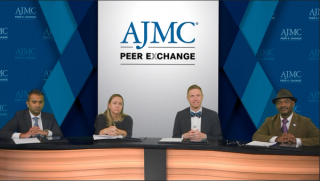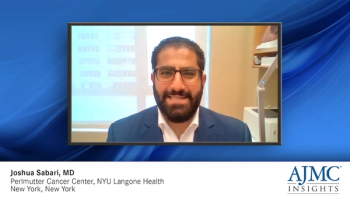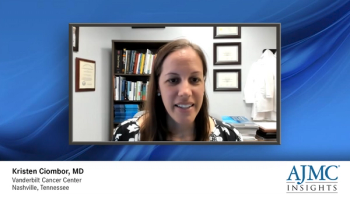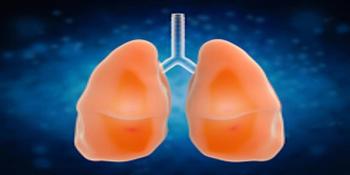
Clinical
Latest News

Latest Videos

CME Content
More News

New data suggest motor function improves with amifampridine.

Dr Haumschild aligns payer considerations with molecular testing and biomarker application for treatment of patients with mCRC.

Our experts conclude with their final thoughts on the future of NSCLC treatment.

Three medical professionals recommend educational needs for both payers and providers within the NSCLC treatment landscape.

Drs Sabari and Spira comment on the use KRAS inhibitors in both frontline and combination therapies.

Dr Kristen Ciombor discusses utilization of biomarkers and molecular testing in the treatment of patients with CRC.


Posters presented at the American Society of Retina Specialists (ASRS) 40th Annual Scientific Meeting evaluated the association between long-term visual acuity outcomes and use of anti–vascular endothelial growth factor (VEGF) therapy, as well as patient and caregiver experience with ant-VEGF.

While anti–vascular endothelial growth factor (VEGF) therapy is the first-line treatment for diabetic macular edema (DME), a majority of patients discontinue therapy after 6 months and there is no consensus on the ideal dosing paradigm.

A machine learning model was able to predict visual outcomes and showed that the time from diagnosis to first treatment indicates visual improvement in patients with macular edema due to central retinal vein occlusion (CRVO).

A new review notes advances and remaining questions, and calls for better incorporation of data from veterans.

The tool could help clinicians better screen patients for adjuvant chemotherapy following curative resection for intrahepatic cholangiocarcinoma (ICC).

At the beginning of the pandemic, remote retinal imaging declined sharply due to a recommendation to stop nonessential eye care services in the first months of 2020, said Parisa Emami-Naeni, MD, MPH, assistant professor of ophthalmology at University of California, Davis, and vitreoretinal surgeon and uveitis specialist at UC Davis Eye Center.

Data show surgery leads to the best outcomes.

This article describes the findings of an observational study carried out in India to examine the clinical profile of individuals detected to be COVID-19 positive post vaccination.

After struggling for months with a Clostridioides difficile infection, Freda Pyles traveled from her home to rural Pennsylvania to Yale-New Haven Hospital in Connecticut for the therapy that ultimately healed her.

A recent study characterized the known association between corticosteroid exposure and type 2 diabetes (T2D), finding risk to be associated with treatment- and patient-related characteristics that can inform prescription of treatment with steroids.

The combination regimen delivered better overall survival and response rates among patients with myelodysplastic syndromes (MDS).

The study of postmenopausal women in Iran found the efficacy of the biosimilar was noninferior to the reference product and the safety was comparable after 18 months.

Additional population-based studies of autoimmune hemolytic anemia and its management are needed to reduce mortality in this patient population.

Triamcinolone acetonide injectable suspension (Xipere) uses a novel delivery mechanism that seems to benefit all patients with macular edema due to noninfectious uveitis, regardless of where the inflammation occurs, said Steven Yeh, MD, professor and the Stanley Truhlsen Jr. Chair in Ophthalmology at the Truhlsen Eye Institute, University of Nebraska Medical Center.

A late-stage trial of dupilumab in young children showed the biologic induced remission in eosinophilic esophagitis (EoE).

Panelists in Wednesday’s webinar, “Don’t Skip Her Beat,” addressed gender disparities in heart failure treatment and offered advice for how women can seek the best care.

Conflicting prior study results on the effectiveness of calprotectin expression as a protective or pathologic response among persons with chronic rhinosinusitis with nasal polyps (CRSwNP) spurred this new investigation.

Patients who received regular physical therapy had improvement that was 4 times better than nusinersen alone, findings from this new study show.










































